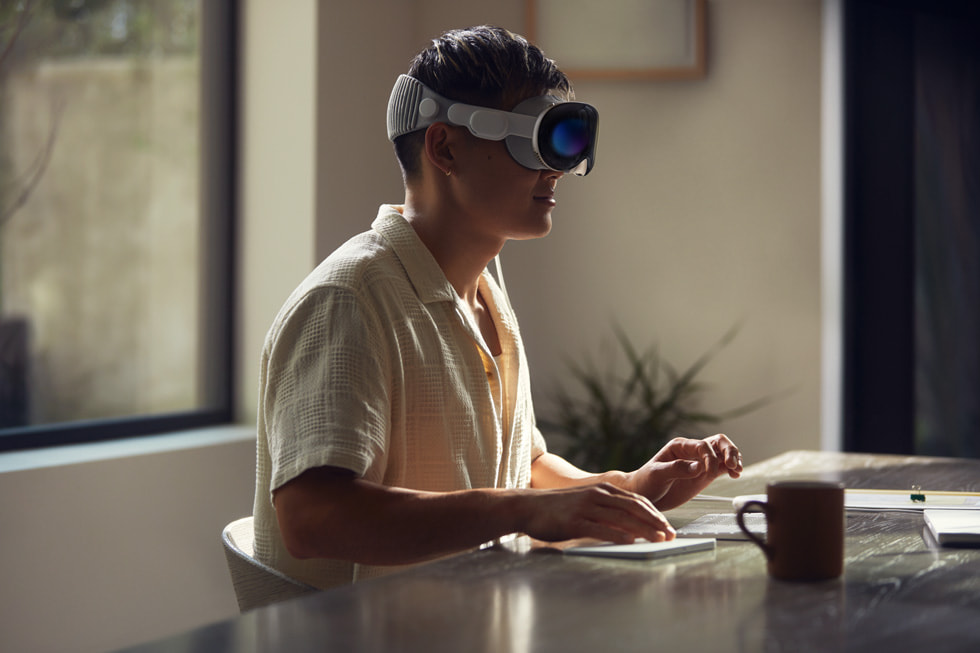Forecast: Apple to revitalise AR/VR market
July 10, 2023

Following Apple’s recent unveiling of its Vision Pro headset, S&P Global Market Intelligence believes that the tech firm is set to play a key role in revitalising the AR/VR market.
Neil Barbour, associate research analyst at S&P Global Market Intelligence, commented: “The AR/VR hardware segment found a relatively low ceiling as an extension of the video game market after an initial surge in 2016 and 2017. But a wave of new headsets hopes to find a broader market by emphasising other popular computing tasks, such as video conferencing, web browsing and media playback. The core value preposition is that AR/VR headsets can merge the portability of a smartphone with the expansive workspace of a multimonitor setup. This marketing message is being championed by Apple, which has a solid track record in emerging hardware segments.”
Key highlights for the analysis include:
- AR/VR headset shipments are expected to increase from 7.9 million in 2022 to 21.4 million in 2027, a 22.1 per cent compound annual growth rate (CAGR), according to S&P Global Market Intelligence.
- AR/VR headsets will start to develop into a relatively approachable computing platform over the next five years as advanced pass-through cameras and a focus on productivity and communication software opens the technology to a wider array of consumer personas.
- The AR/VR market’s next push into the mainstream will be spearheaded by Apple, which said it will start selling the Vision Pro in early 2024. However, Apple itself is not expected to drive a substantial number of headset sales in 2024 as both demand and supply will be limited due to its high entry pricing of $3,500 and high-end components, such as OLED screens.
- Instead, Apple is likely to drive substantive buzz around the market that will benefit other entrenched vendors. Meta Platforms is most likely to benefit as it builds on its market-leading position with a new headset Quest 3 later in 2023 and a price reset on its existing hardware.
- AR/VR will also be an important tool in accessing and building content for the metaverse. More AR/VR use cases are expected to fuel the need for more shared virtual spaces, avatars, and the convergence of digital and physical data. This will be true in the consumer space (gaming, social) as well as the commercial space (digital twins, training, industrial design). As more headsets are installed, shared virtual experiences are expected to make a more concerted effort to serve those users and vice versa.
- There were an estimated 39.7 million AR and VR headsets installed in consumer and commercial settings as of the end of 2022, down 1.2 per cent from 34.2 million in 2021 as user churn outpaced slowing sales. But installed base growth base is expected to pick up in 2023, and over the forecast, the installed base is forecast to grow to 71.4 million.
Kevin Wang, Director, Altman Solon, has some commented: “In early July came reports that Apple is reducing its initial production of the Vision Pro from 1 million to 400,000. This is not unexpected, considering that Apple would not want to sacrifice production quality over quantity. The challenge with a complex device like the Vision Pro is that the user experience features, both digital (display, sound) and physical (padding, strap, corrective optical replacements, etc.), must seamlessly work together to deliver the user experience that Apple has promised through its rollout marketing campaign. Ensuring a high-quality initial batch likely will require a lengthy and even manual QA process for each piece produced and shipped. Apple could also likely target developers for the initial batch of Vision Pro devices that would be more tolerant of initial production issues. Over time, this delivery cycle would shorten, but we are still in the trial-and-error period in the short term. Once Apple announced the Vision Pro’s high price and ambitious user experience, it was clear that the company’s first push into AR/VR would not become a blockbuster product overnight. However, revised production schedules six months before the product is broadly available to consumers should not dim Vision Pro’s long-term viability.”
